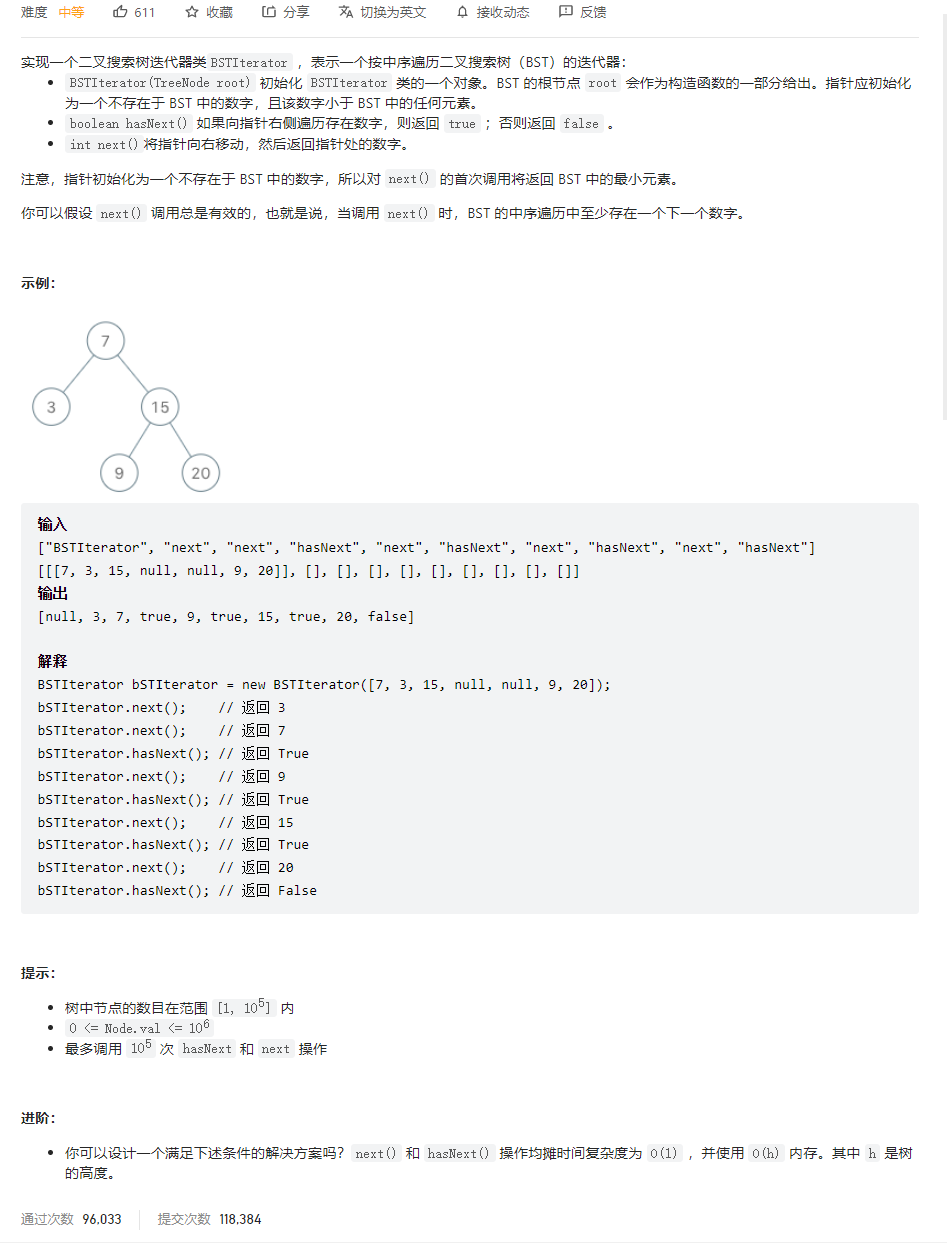🌕 173. 二叉搜索树迭代器
2022年10月10日
- algorithm
🌕 173. 二叉搜索树迭代器
难度: 🌕
问题描述

解法
/**
* Definition for a binary tree node.
* public class TreeNode {
* int val;
* TreeNode left;
* TreeNode right;
* TreeNode() {}
* TreeNode(int val) { this.val = val; }
* TreeNode(int val, TreeNode left, TreeNode right) {
* this.val = val;
* this.left = left;
* this.right = right;
* }
* }
*/
class BSTIterator {
// 思路:
// 中序遍历 - 迭代
TreeNode root;
LinkedList<TreeNode> stack;
public BSTIterator(TreeNode root) {
this.root = root;
this.stack = new LinkedList<>();
// 定位到 next 首节点
TreeNode cur = root;
if(!stack.isEmpty() || cur != null) {
while(cur != null) {
stack.push(cur);
cur = cur.left;
}
}
}
public int next() {
TreeNode cur = stack.pop();
int res = cur.val;
cur = cur.right;
if(!stack.isEmpty() || cur != null) {
while(cur != null) {
stack.push(cur);
cur = cur.left;
}
}
return res;
}
public boolean hasNext() {
return !stack.isEmpty();
}
}
/**
* Your BSTIterator object will be instantiated and called as such:
* BSTIterator obj = new BSTIterator(root);
* int param_1 = obj.next();
* boolean param_2 = obj.hasNext();
*/
输出
